Explore a hidden gem in north Vietnam
Enquire about a tour with YESD!
Enquire about a tour with YESD!
I want to book a stay at Olaulim Backyards
I want to support Telunas Beach Resort
Visit Cafe Inklusi to get great local food and support the deaf community.
Book a rainforest experience with Green Hill
Gopeng is quintessentially a Malaysian sleepy hollow. It’s a town that whispers to you, a far cry from the roar it had in the 19th and 20th centuries when it was a tin mining hot spot. Today Gopeng is one of Asia's top adventure destinations. From the heritage of this old mining town, a new haven of eco-tourism and adventure has been unearthed.
Friday | Hup Teck Soya Sauce Factory, Gaharu Tea Valley, Adeline Villa & Resthouse |
Saturday | Ulu Geroh (Rafflesia trek), Museum Gopeng, Earth Camp |
Sunday | Nomad Adventure Mountain School |
The town lies two hours away from Kuala Lumpur, and is near Ipoh. As old mining towns go this tranquil one boasts of rivers, caves, and limestone cliffs.
It was the exact answer for me as I searched for a way to keep the centuries old way of life intact for the locals and the honouring of its history as a mining town.
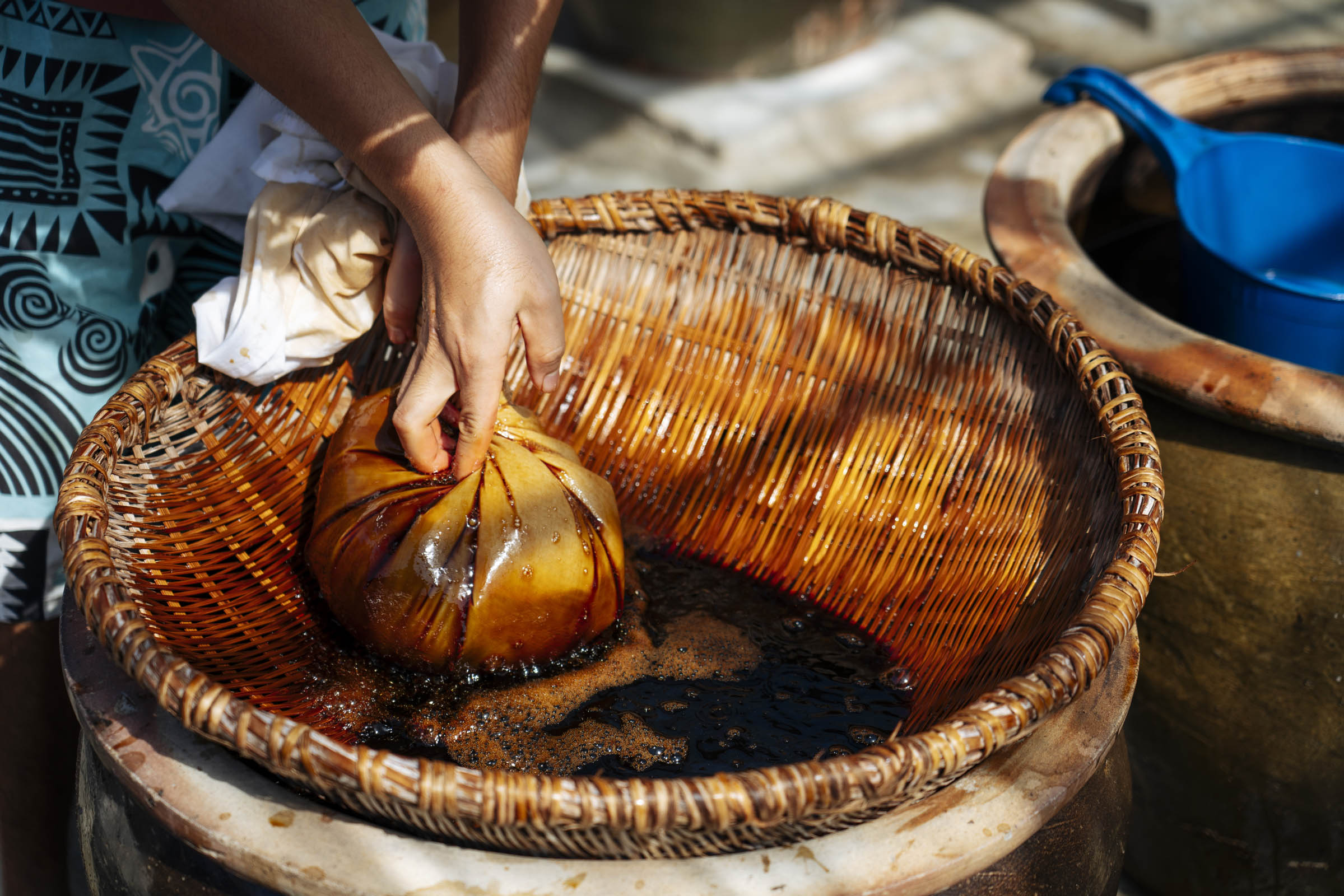
Soy sauce making process at Hup Teck Soya Sauce Factory. Photo by Teoh Eng Hooi.
History meets craft at Gopeng. First up there is Hup Teck Soya Sauce Factory, one of the last surviving businesses from before the First World War. The secret to its survival lies in a fermentation technique for making soya sauce introduced by the late founder from Guangzhou, China. The heavy earthen pots are used for ageing the bean mixture. According to second-generation owner Low Pak Tong, "The pots absorb heat during the day to allow the fermentation to continue at night and their porous surface allows air circulation which enhances the intensity of the flavour.” These pots are at least a century old.
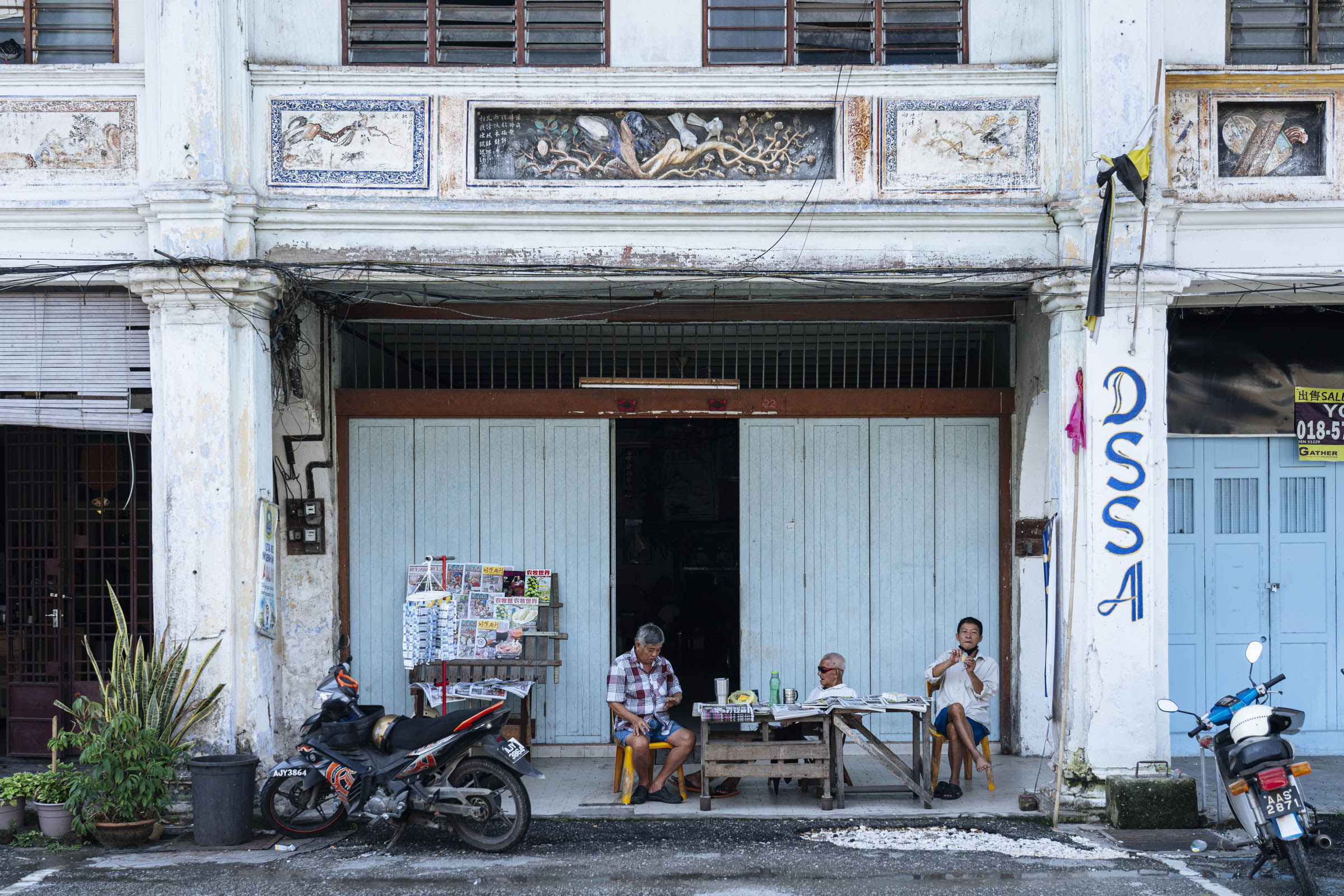
Locals hanging out at the newspaper stall in Gopeng town centre. Photo by Teoh Eng Hooi.
As you enter the heart of Gopeng town where I would highly recommend that you walk… and walk… and walk… and allow the buildings and architecture to introduce themselves to you, one of the first things you’ll see is a roundabout with a Rafflesia emblem - once the site of Gopeng’s historic core. Nearby, a good number of pre-war buildings that survived a great fire in 1886 still exude an old-world grandeur, standing erect. What you see reflected in the original architecture is a legacy of Gopeng’s multi-ethnic settlers. The footprints of these people crisscross the tin mining town of old.
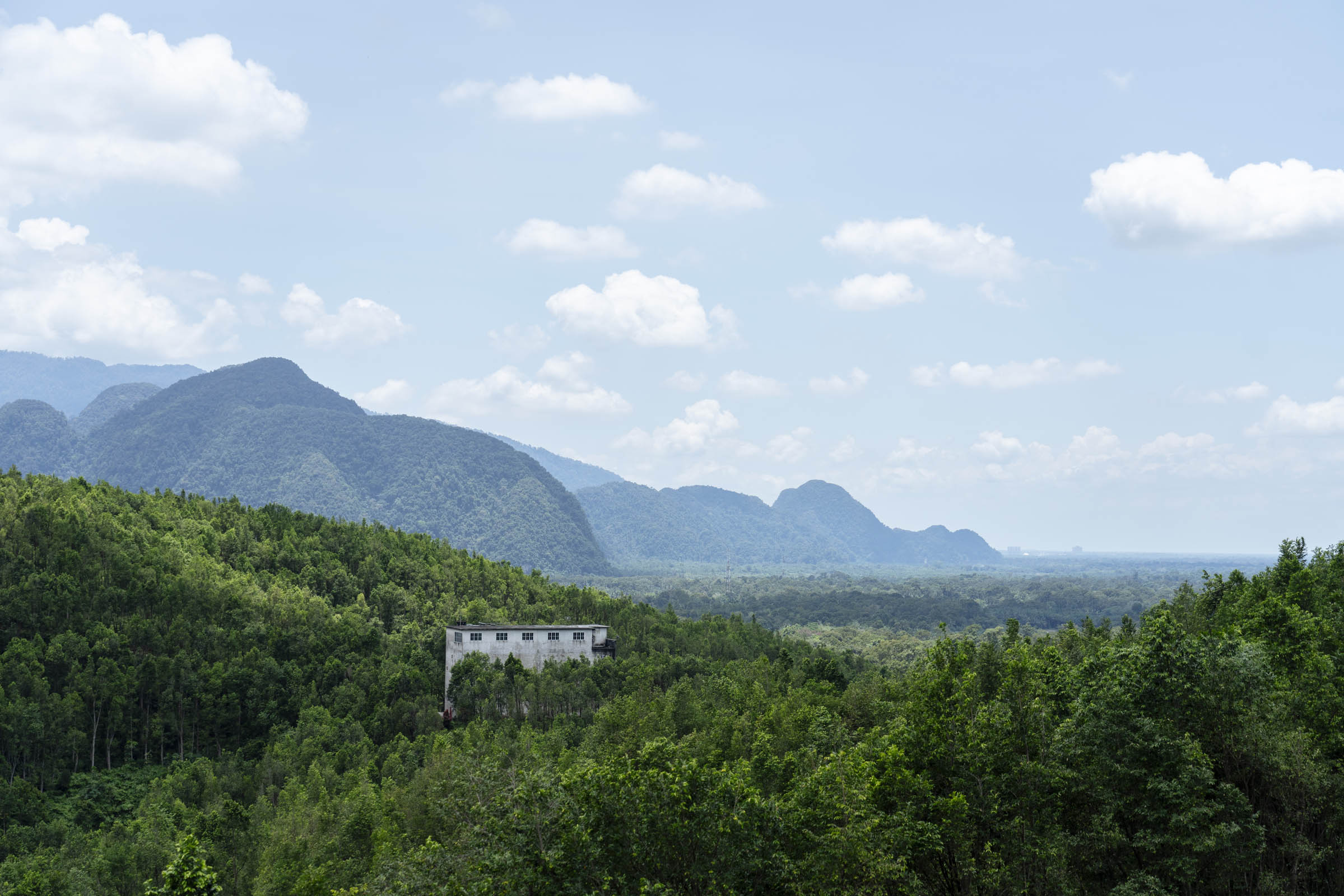
View from the first checkpoint of the Gaharu Tea Valley tour. Photo by Teoh Eng Hooi.
The high fortified wall (dubbed the Mini Great Wall of China) guarding Gaharu Tea Valley - Malaysia’s first and biggest organic plantation for gaharu, the Malay name for agarwood, may seem tacky, but Gopeng’s most-hyped attraction in recent years is quite fun. For just 10 Malaysian Ringgit (USD$2.20), you get to explore the 300-acre property in an air-conditioned van, and find out why gaharu is so highly prized (answer: it’s incredibly difficult to extract), hug a tree, enjoy stunning valley views from the panoramic stage, and sample gaharu ice-cream.
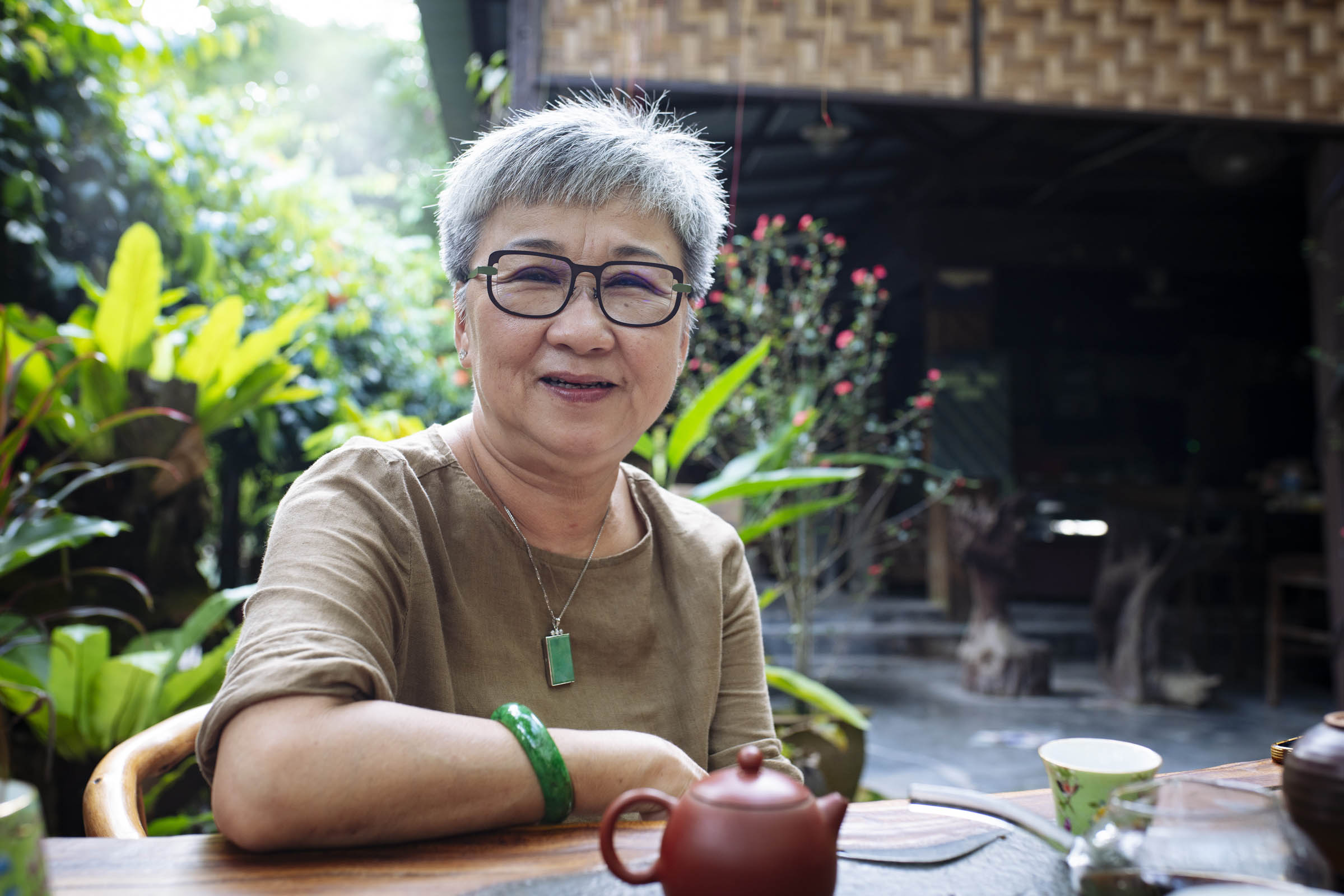
Adeline Kuo. Photo by Teoh Eng Hooi.
Gopeng’s eco-tourism status is intact because back-to-nature resorts and “glamping” sites have mushroomed. One of the sharp business investors at the time built the Adeline Villa & Rest House, which is a must-visit accommodation site.
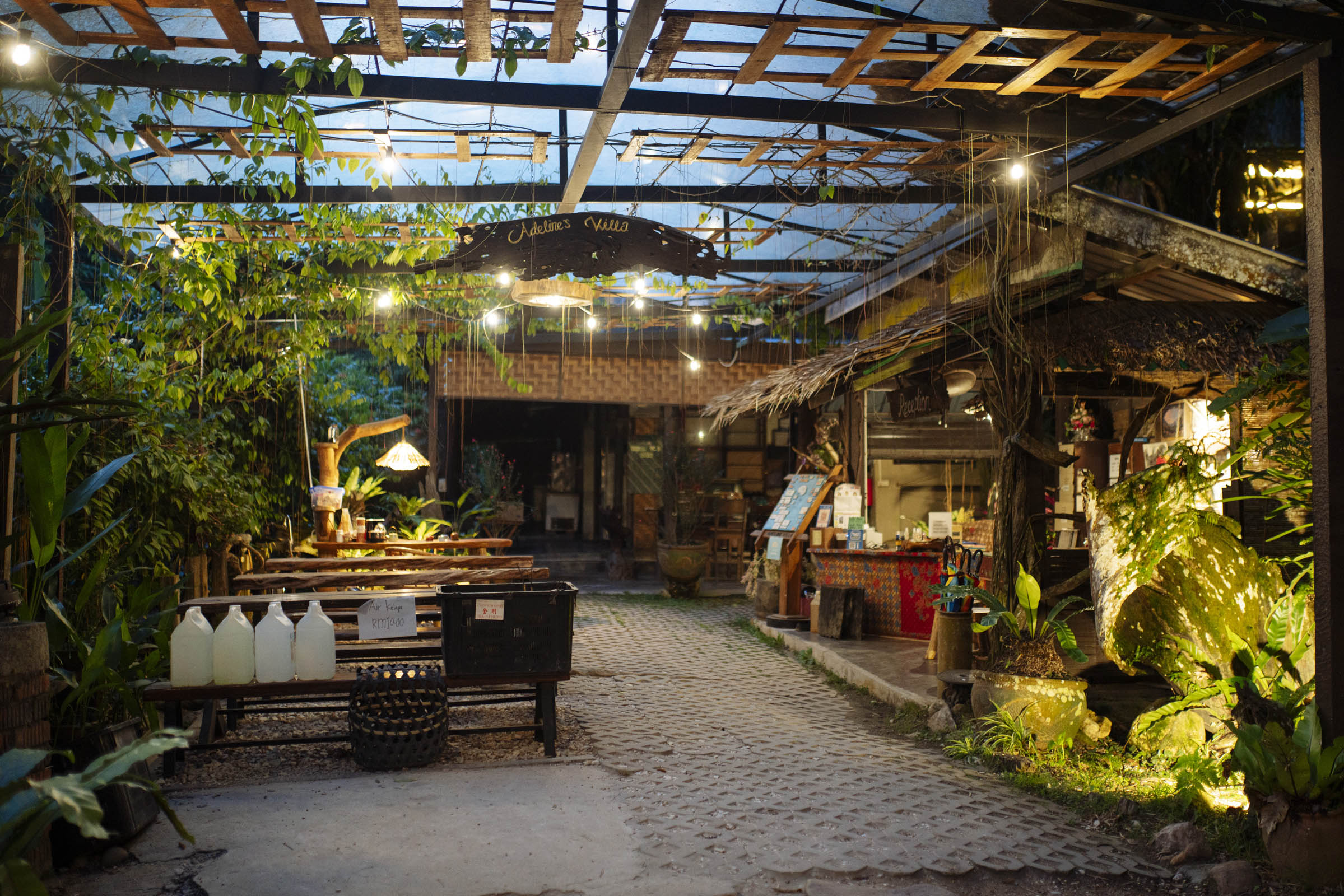
Adeline Villa & Rest House reception area. Photo by Teoh Eng Hooi.
Set on a hilly terrain surrounded by rainforests, this dual-property, solar-power-fuelled accommodation has bamboo-styled rest houses, upscaled chalets and comfortable dorms to choose from - a far cry from its humble beginnings.
Way back in 2004, single parent and hairdresser Adeline Kuo saw the future of eco-tourism and opened up a barebones campsite as a way to earn a living and better support her children. You can’t help but admire her for her business savviness and grit.
Today, this bubbly lady employs more than 50 workers with some of them from the ‘underserved’ Semai Community who make up one per cent of Malaysia’s population. The Semai people were a formerly nomadic minority indigenous tribe famed for their forestry knowledge. Today they use that knowledge to contribute to eco-tourism and maintain the adventure activities of Gopeng. Adeline’s motto in life is simple, “When you make others happy, you are also happy.”
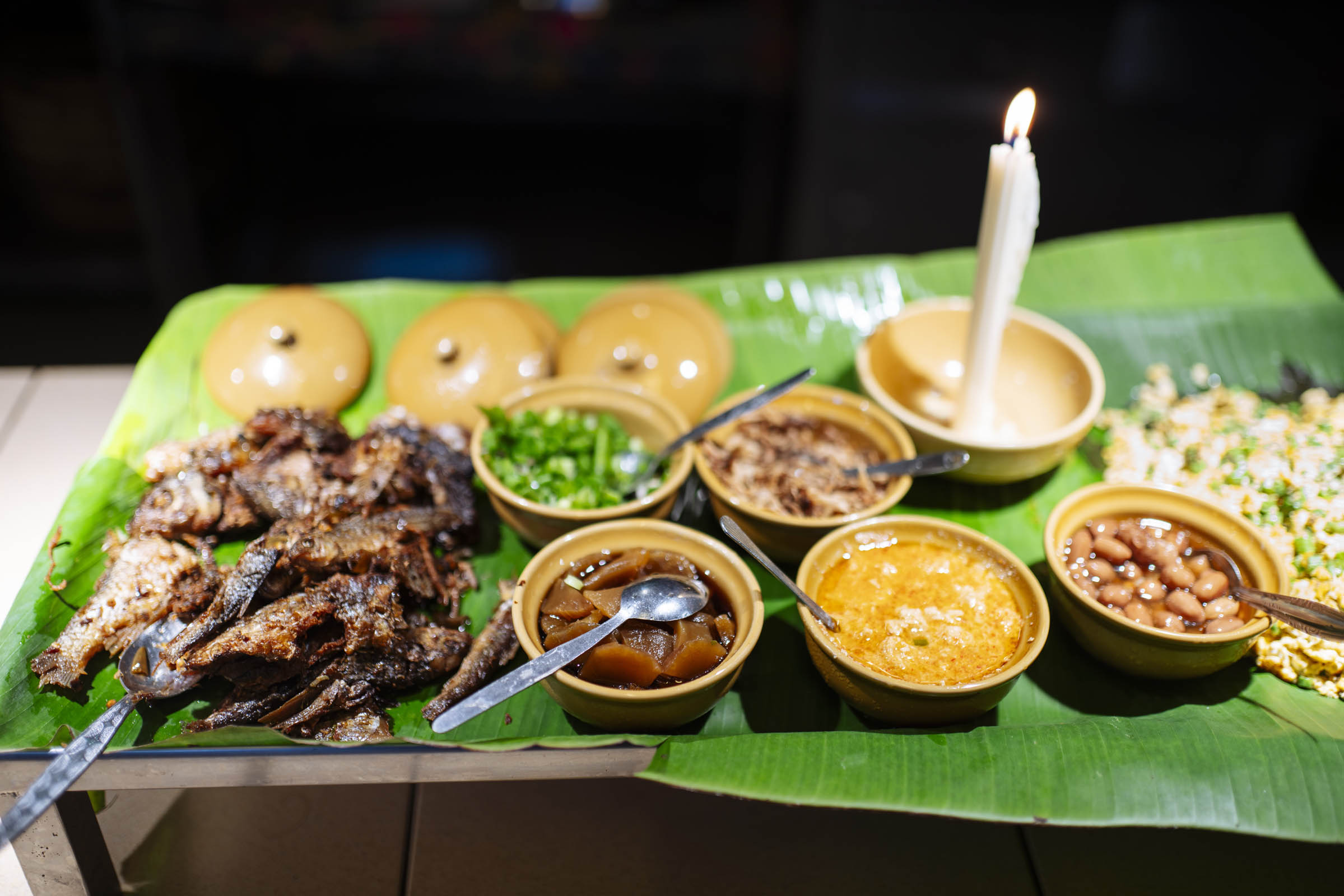
Breakfast at Adeline’s: Porridge with fried fish, fermented vegetables, braised peanuts, spring onions, anchovies on the side. Photo by Teoh Eng Hooi.
Knock yourself out at dinner with Adeline’s legendary village-style buffet. The ingredients are indigenously sourced. The local specialties include asam laksa, which is rice noodles in a spicy-sour broth, nasi ulam or rice salad, tau fu far which is soya bean curd, barbeque, kueh (dessert snacks), and a whole lot more. A large gulp of cool mountain air is highly recommended after dinner. And the mountain also serves up some delights for the eye. Brilliant orange striped spiders, baby birds and glow-in-the-dark mushrooms.
A 10-minute drive on a narrow hillside road will bring you to Kampung Batu, one of five villages that make up Ulu Geroh, otherwise known as Gopeng’s gateway to fertile grounds of the Rafflesia, the world’s biggest flower. While not unique to this area, researchers say Ulu Geroh has the highest concentration of the Rafflesia, which blooms once every nine months and dies mere days later.
One of many guides available, Bah Insan, is a Semai. Many Semai people resort to becoming tour guides as a way to improve their lives. That way the knowledge they have inherited from their ancestors also lives on.
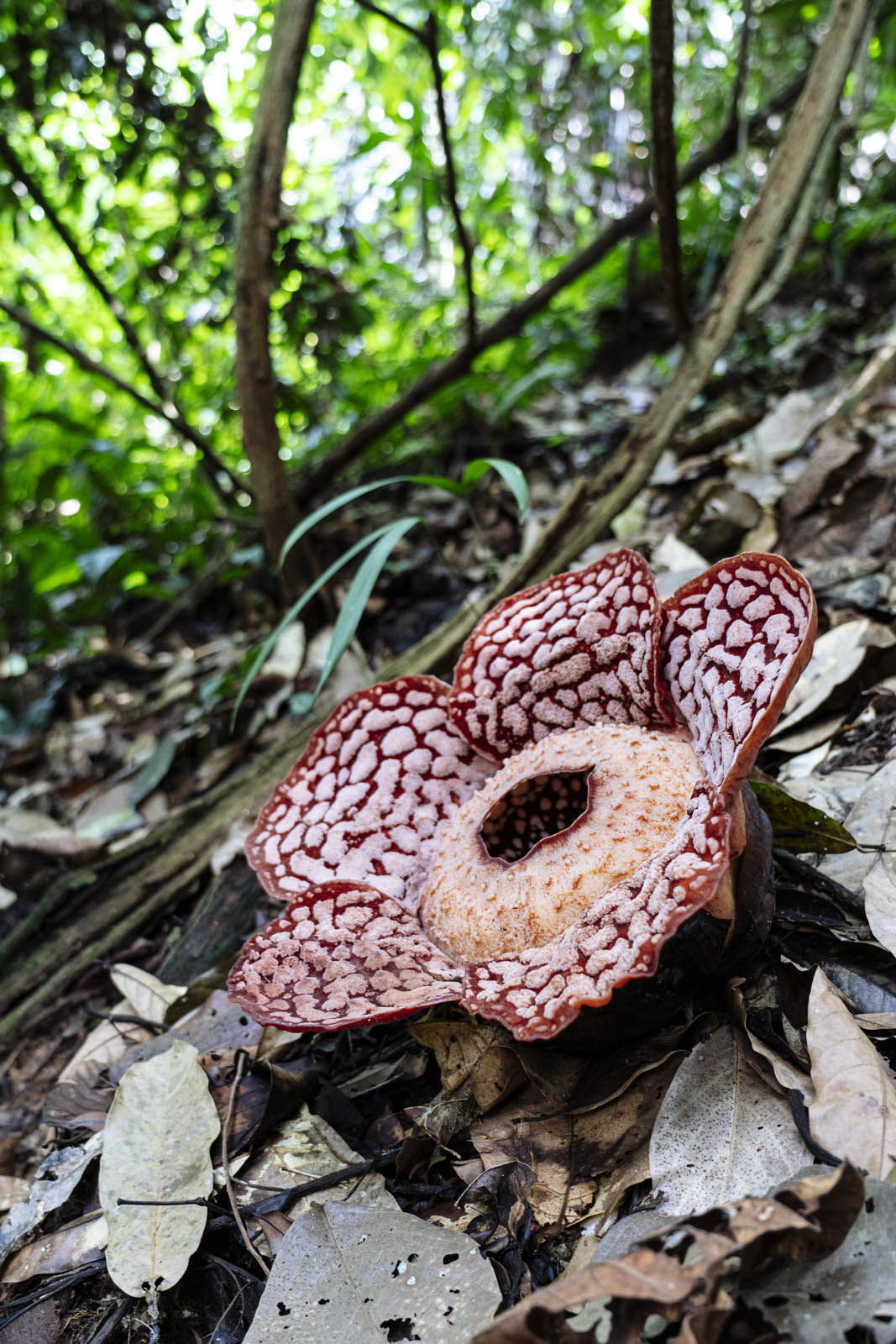
Rafflesia in bloom. Photo by Teoh Eng Hooi.
To get to the Rafflesia, you will go on a one-hour trek up the Leech Trail (which lives up to its name, so be prepared). The journey can be a little daunting - the trail is one continuous elevation, with some sections at a 45 degree angle - all worth it as you see the Rafflesia in full bloom.
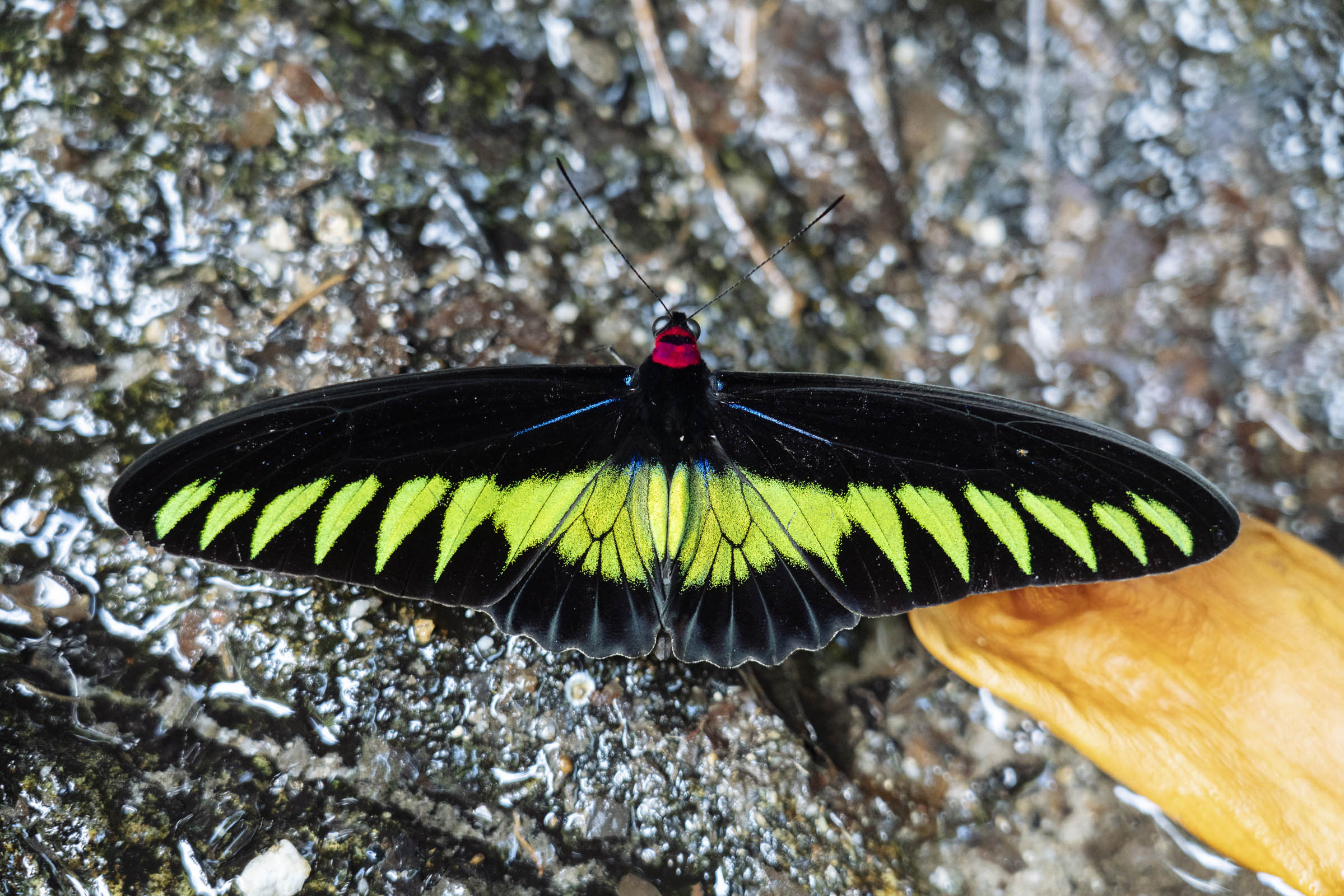
Rajah Brooke’s Birdwing butterfly. Photo by Teoh Eng Hooi.
From here, you’ll proceed to a nearby site famous for spotting the rare Rajah Brooke’s Birdwing butterfly with metallic-green and black wings. Insan hopes to educate the public about Ulu Geroh’s biodiversity so that his community “can have a stronger voice to oppose activities that harm the forest.” A few years ago, he joined forces with the locals to petition against illegal logging and by winning that battle he has helped keep the forest and its wild inhabitants protected for the next generation.
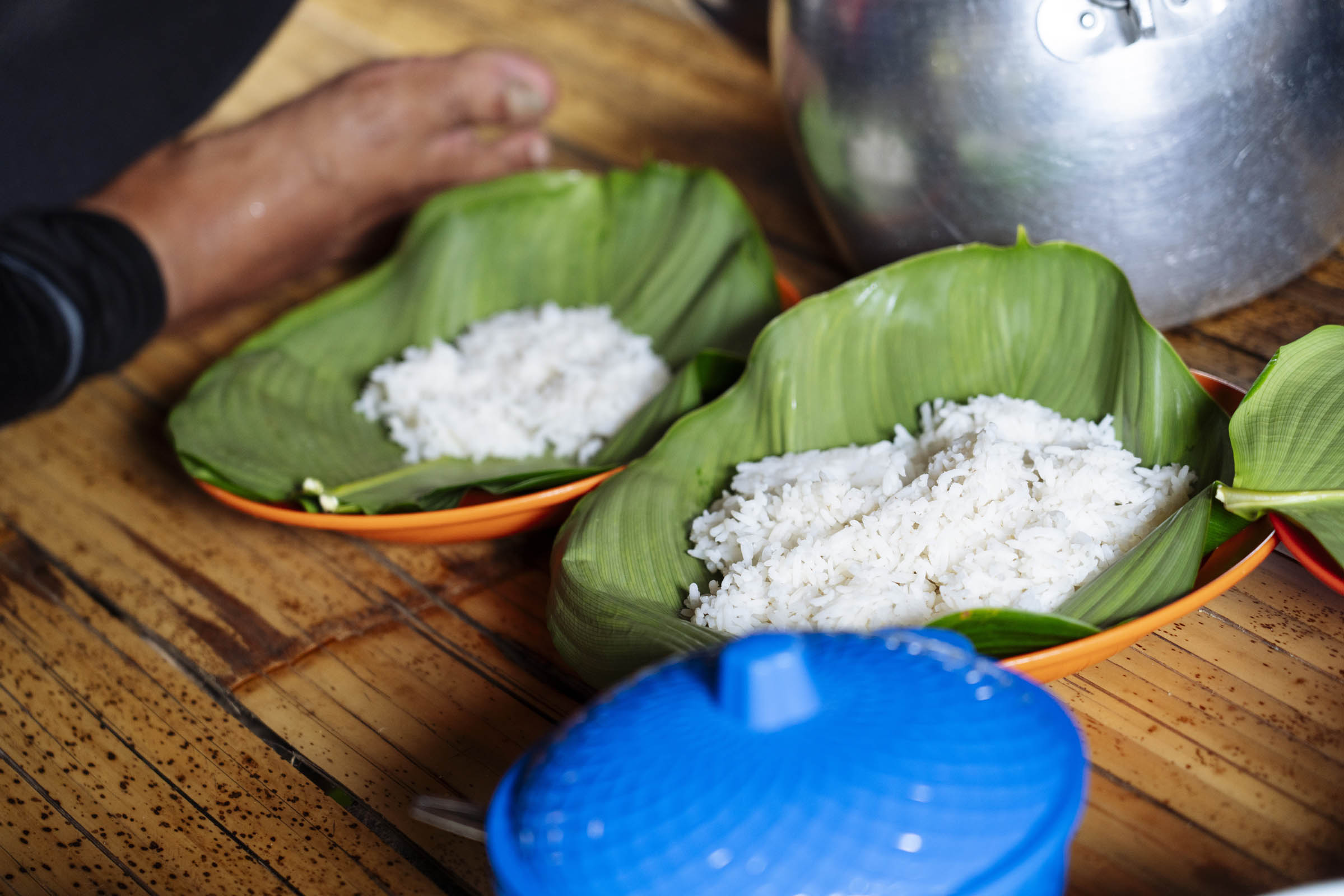
Lunch being prepared. Photo by Teoh Eng Hooi.
A scrumptious communal meal that the Semai womenfolk cook up using natural “utensils” like bamboo and firewood is the icing on the cake. Your host probably caught the fish from the nearby river the previous evening and foraged the jungle for ulam or wild ferns, to go with your rice and durian sambal, a pungent fermented condiment you’ll hate or love. Sorry, there really is no middle path with durian.
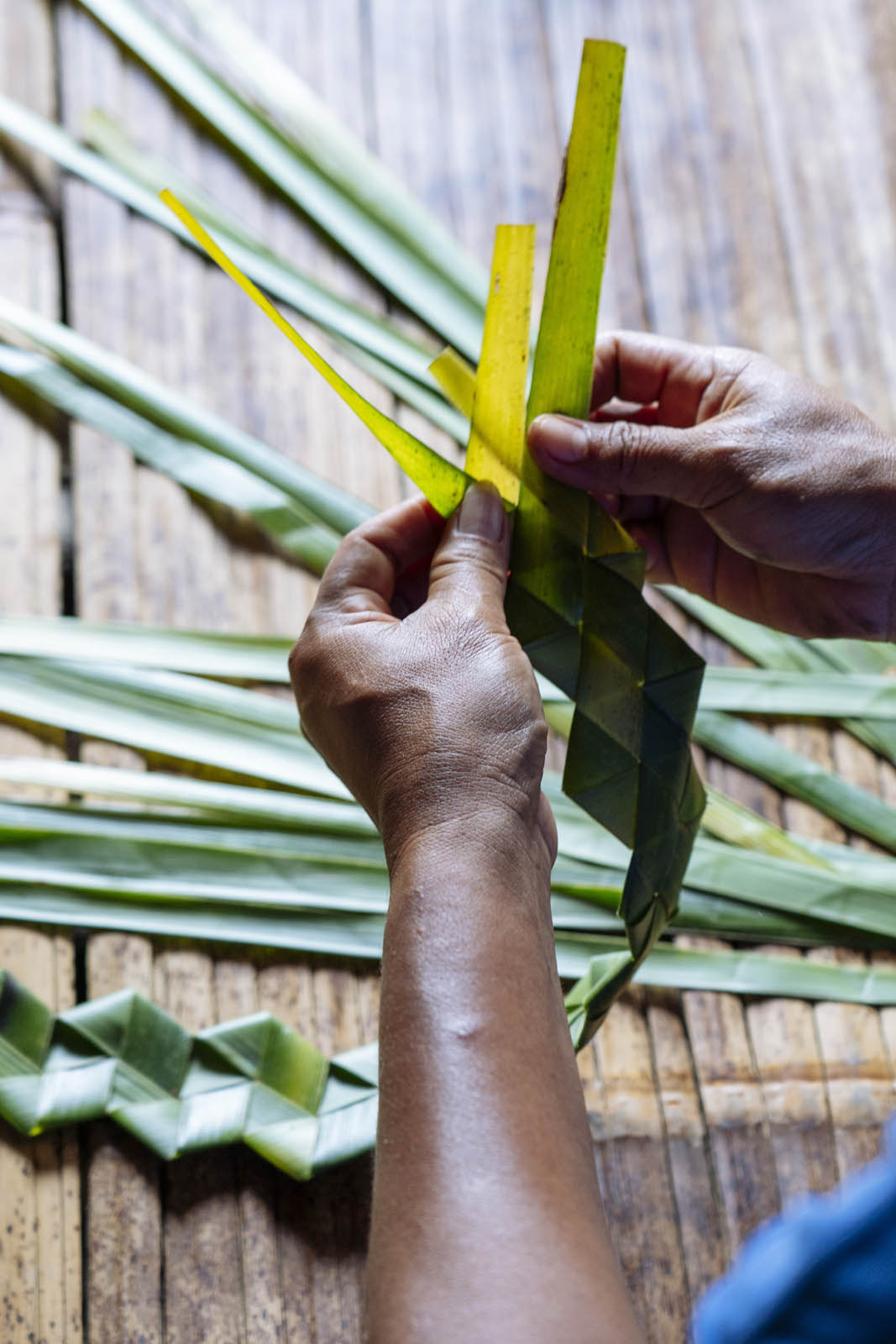
Anyam, or traditional weaving by the Semai. Photo by Teoh Eng Hooi.
Post-lunch, Insan’s sidekicks will treat you to an indigenous arts and crafts demonstration. Learn about anyam which translates to traditional weaving, as the ladies skilfully entwine coconut leaves into headgear and baskets. Be pleasantly surprised by the humane philosophy behind Semai hunting techniques; the sumpit, a bamboo blowpipe used to catch small animals, delivers instantaneous death, sparing them from prolonged agony.
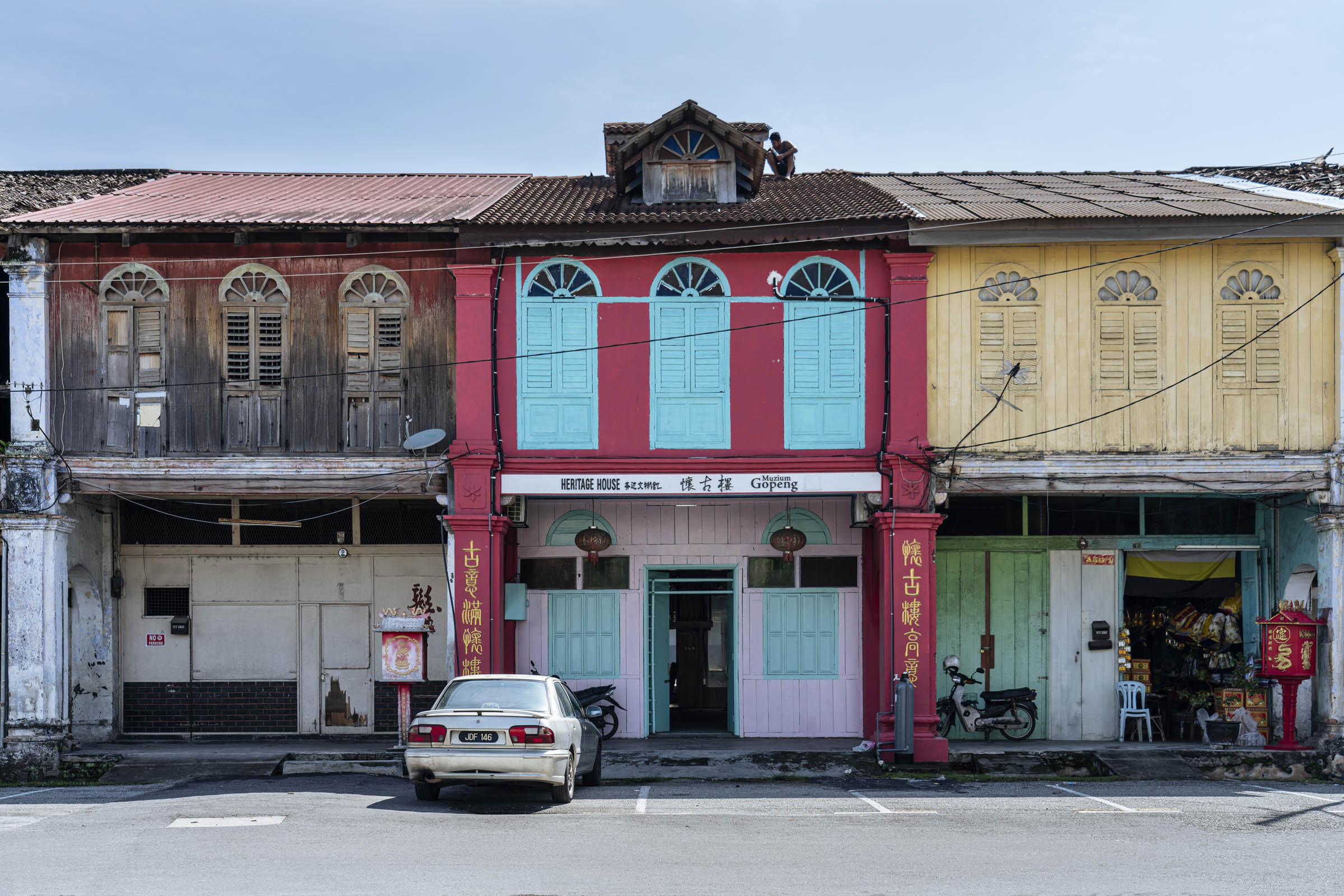
Museum Gopeng facade. Photo by Teoh Eng Hooi.
On the way back, drop by Museum Gopeng, which only opens on weekends. Housed in a wooden building that originally served as the horse stables of tycoon Eu Kong (founder of a traditional Chinese medicine pharmaceutical known as Eu Yan Sang), the volunteer-run museum offers a charming look into Gopeng’s past. Rare photographs tracing Gopeng’s evolution from the 1850s, and vintage memorabilia such as mining equipment, rubber tapping tools and other collectibles all hang proudly. In capturing that part of history Gopeng pays homage to the community that helped make this town a rip roaring mining site.
While admission is free for now, donations for the upkeep of the museum are encouraged. Gopeng had other private museums which shuttered after the pandemic, highlighting the challenge of keeping these community-driven initiatives going.
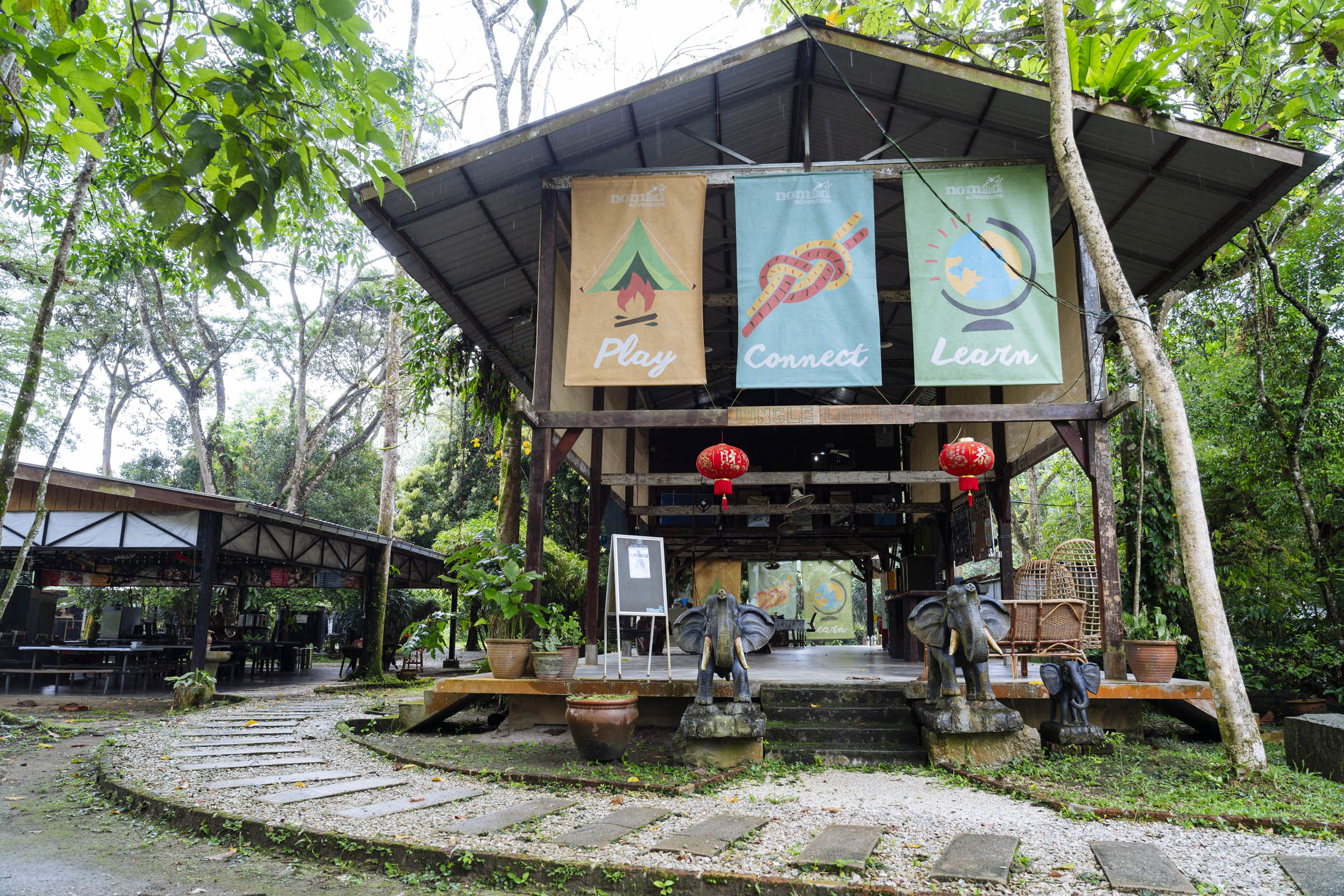
Earth Camp jungle lounge. Photo by Teoh Eng Hooi.
Dinner and a night at Earth Camp is a must-do. This is a campsite and headquarters for outdoor adventure company Nomad Adventure. Located next to the scenic Kampar River, your commune with nature with the bare minimum. Fans and mosquito nets are all you will need - trust me that is more than enough. Designed with green building principles in mind, all the buildings have passive cooling systems, UV-resistant water tanks that are repurposed into low-carbon footprint toilets, and the attractive jungle lounge is made from recovered wood from 100- year-old shophouses.
Nomad’s founder Chan Yuen-Li is the stuff of legends. She has been an outdoor lover whose past lives include stints as an award-winning environment journalist and competitive adventure racer, she captained the first Malaysian team to complete the Eco Challenge Morocco 1998, a multisport ten-day adventure that involved riding camels, kayaking and snow expeditions, among other things.
More importantly, she established Gopeng as one of Asia’s top adventure destinations. She recruited her team by literally showing the locals photos of the sport, and asking, “Who can swim and wants to be a rafting guide?”
These days, the company employs more than 50 people including part-timers, mostly locals from neighbouring villages.
Nomad also invests significant resources into environmental education programmes and activities that benefit the community, such as clean-ups of illegal rubbish dumps, since Gopeng, like many small towns in Malaysia, still has no rubbish collection service.
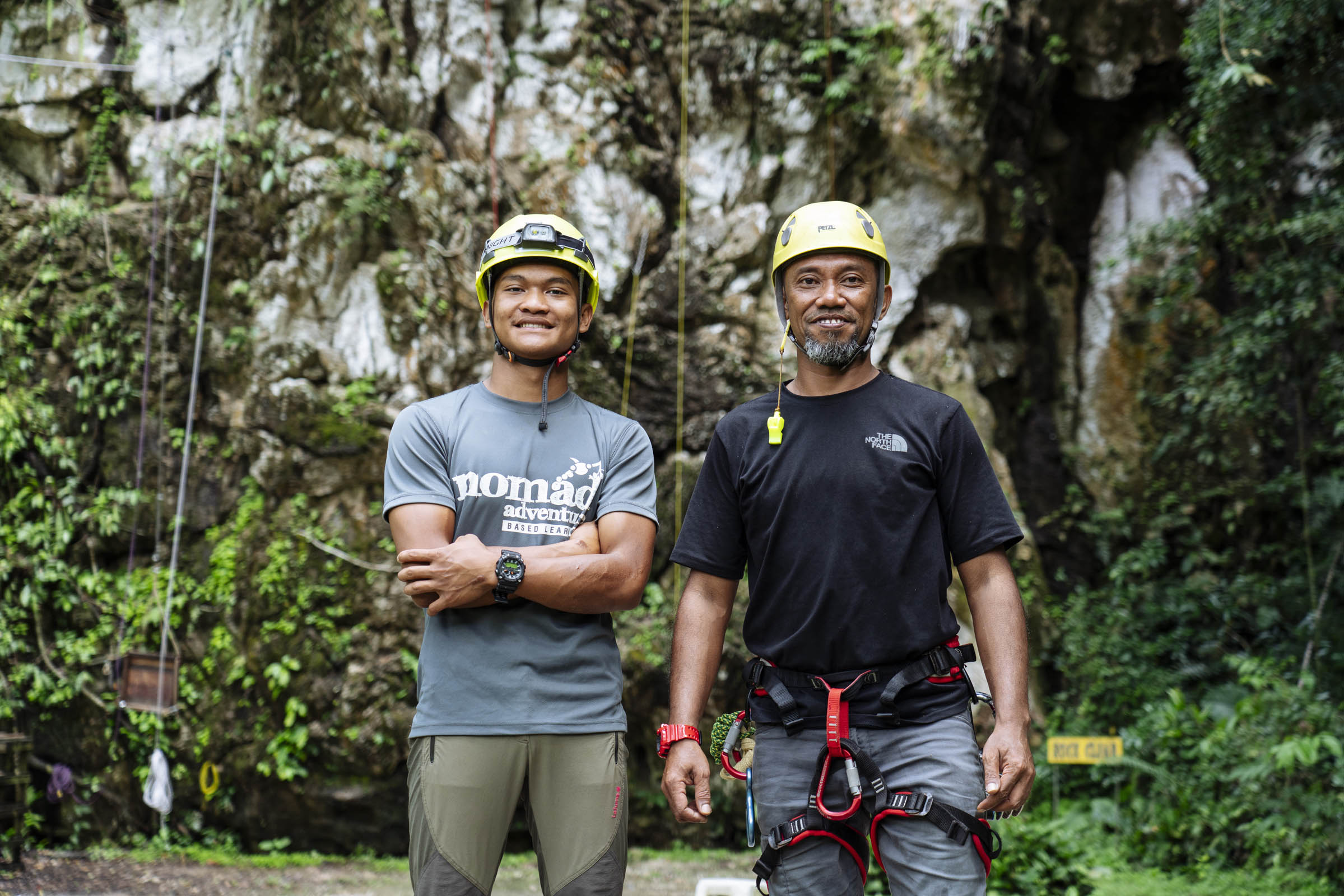
Student Imran (left) and instructor Rafizi (right) at Nomad Adventure. Photo by Teoh Eng Hooi.
For your last day in Gopeng, it's a full-throttle adrenalin-pumping adventure ahead. White-water rafting is Nomad’s best seller. With 22 rapids, Kampar River offers everything from gentle flat-water rafting for the beginner, to tackling larger rapids for intermediate participants. Also popular: the unique ropes course at their Mountain School.
Nestled in a scenic forested plot of land that’s partly surrounded by a limestone outcrop - with its own private cave - the “school” is really an adventure park that lets you choose from five high-ropes courses of varying levels of difficulty. Fun fact: when building the site, care was taken to ensure the original state was preserved - the durian trees with high-rise jumping-off platforms have been there since day one.
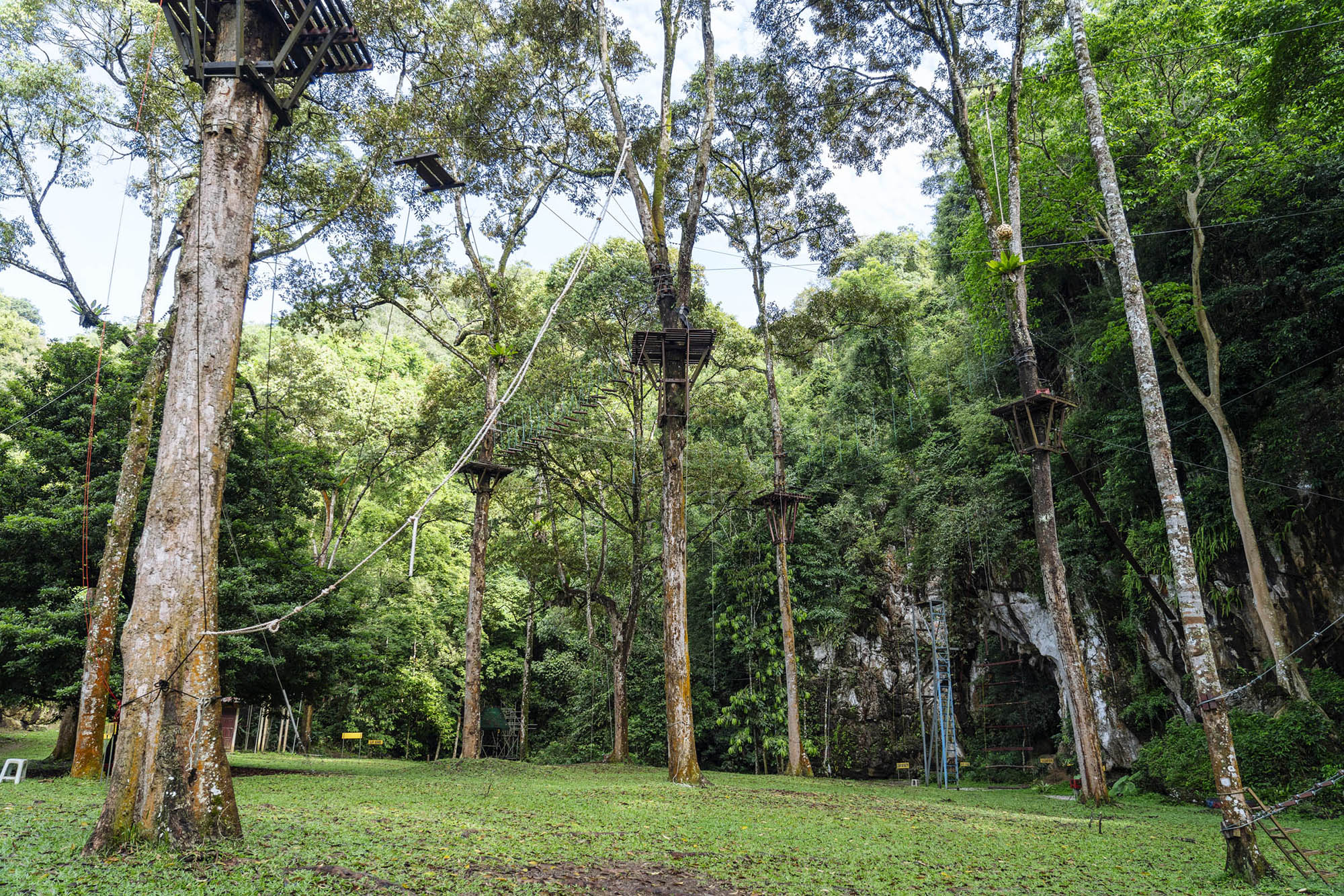
Durian trees at Nomad Adventure’s Mountain School are used for the outdoor learning courses. Photo by Teoh Eng Hooi.
As you test your balance on treetop suspension bridges, climb wobbly rope ladders, and glide across ziplines over limestone pinnacles and lush rainforest below, you will learn about and even surprise yourself. “Our mission is to provide an environment for participants to interact with nature through outdoor learning experiences,” says Yuen-Li. “Nature is our greatest teacher - a place to explore potential and discover purpose.”
I started out saying that Gopeng whispers to you. That’s how instincts also work for most of us – they come as whispers initially. You may wonder then what my travel tip is to you? I say, “Listen to your whispers. Trust your whispers. They rarely let you down.”
Ho Chi Minh City (HCMC), locally referred to by its old name Saigon, is one of Asia’s most fascinating cities. Home to about 9 million people, the bustling metropolis in Vietnam’s south is a colourful juxtaposition of old and new with east and west.
Friday | Blanc. Restaurant Saigon, Fito Museum of Traditional Vietnamese Medicine |
Saturday | Cat Tien National Park (Vườn Quốc Gia Cát Tiên), Saigon Outcast |
Sunday | Fin Saigon |
The city’s rich imperial and colonial past can be found in its architecture, ubiquitous street coffee culture and hole-in-the-wall eateries serving up some of the most delicious and affordable local and international cuisine in the region
But Saigon is more than its colourful past. Rapid development has brought with it skyscrapers, modernised public transport — rent a public bicycle, take the water bus or even hop on the upcoming metro line — and a lively arts and events scene.
Set out for District 1 (D1), the city centre and default starting point for most travellers to Saigon. If you’d like to base yourself here, look out for Caravelle Saigon, a city icon. Built in 1959, it was one of the country’s icons of modernity, and it is currently only one of two EarthCheck-certified hotels in the whole country.
D1 is home to many of the city’s colonial-era monuments, including the Saigon Post Office and Notre Dame Cathedral. Both are located within walking distance from each other, and a stone’s throw away from shopping malls, streetside coffee shops, and markets selling assorted goods in all colours and tastes — a contrast of old and new that will be a recurring theme throughout your trip.
If you are feeling energised, it’s possible to cover most of D1 within a day with TNGO’s Public Bicycle System app, allowing you to seamlessly navigate the city’s many alleys – some hidden – exhaust-free.
Some of Saigon’s more iconic restaurants and cafes can be found in D1, alongside popular family establishments and street vendors. If you’re not ready to take the plunge into Vietnamese street cuisine, head to Blanc. Restaurant for lunch.
The restaurant serves a fusion of cuisines in a modern setting — think duck breast served with butternut squash puree, Vietnamese basil, starfruit, bamboo shoots and ginger fish sauce. With a few set menus to choose from, helpful staff are on hand to help you make a decision.
And you may notice the menus come with illustrations featuring Ho Chi Minh City sign language (one of three Vietnamese sign languages) for each dish — which you are encouraged to use instead of speaking. Blanc. Restaurant employs staff who have hearing disabilities. According to the restaurant, about 65 to 70 per cent of deaf and hearing-impaired people in Vietnam are unemployed, and the restaurant was opened to give people with hearing disabilities a chance to earn a living.
Make your way to District 10 (D10), a short ride away from D1. On your way, notice the colonial buildings and wandering tourists giving way to a vibrant residential district filled with rows of traditional shophouses, juxtaposed with modern malls and office buildings. D10 is one of those districts where the main roads lead to smaller roads that hide alleys that lead to even more alleys, each with their own little secrets.
Nestled along a single-lane road is the Fito Museum of Traditional Vietnamese Medicine. Founded by Dr Le Khac Tam in 2003, the private museum showcases the evolution of Vietnam’s traditional medicine, a part of its heritage that dates back thousands of years. The museum’s architecture reflects the styles of some of the ethnic minority groups in Vietnam like the Chams, including a Champa temple on the fifth floor. You can also find original traditional instruments and other prehistoric artefacts, including some from the Stone Age.
For dinner, head back to D1 and make for Organik Kitchen Saigon. In true east-meets-west style, your first dinner in Saigon could be a falafel pita sandwich, a bacon salad, or even an Italian margherita pizza, all under USD$6-$7. Besides their plant-based offerings, what’s even more memorable about this vegan establishment is the revolving door of live music performances, stand-up comedy shows, art exhibitions and charity fundraisers within its premises, which it shares with Indika Saigon, an indie bar and events space. Enjoy a house made tropical rum punch as you soak in your first night in Saigon.
Ready for a break from the chaotic energy of Saigon?
Dong Nai Province, home to Cat Tien National Park (Vườn Quốc Gia Cát Tiên), is an ideal escape into nature. The national park is about 150km from Saigon’s D1, a five-hour bus ride away.
At 738sqkm, Cat Tien National Park is about the size of Singapore, and home to Ta Lai village where the Ma, Tay and Stieng ethnic communities live. Primates like the native golden-cheeked gibbon and pygmy slow loris, as well as sun bears and leopard cats, including a thousand species of birds, can also be found at the national park. Endangered creatures like Asian elephants, Sunda pangolins and the Siamese crocodile can also be spotted.
In the park, you can visit the Cat Tien Bear and Wildlife Rescue Station, Bau Sau Crocodile Lake or go on an Animal Night Safari. Better yet, consider an overnight stay at Ta Lai Longhouse, an initiative by the World Wide Fund for Nature (WWF) to support the Ta Lai communities by developing their capacities to guide travellers on ecotourism activities like trekking, kayaking and fishing.
These opportunities enable communities to improve their livelihoods and better access essentials like education. Thirty per cent of the bill from your stay is donated to their community development fund which provides job opportunities and supports community projects.
If you prefer to stay in Saigon, check out Thu Duc City; in 2020, Districts 2 and 9 in Saigon were merged to form Thu Duc, effectively a new city in a city.
An up-and-coming major economic zone and technology hub in Vietnam, Thu Duc can be reached via the futuristic-looking Thu Thiem 2 bridge. Its glass-walled skyscrapers, al fresco dining establishments serving international cuisine and high-end serviced apartments are a world away from the colonial buildings and shophouses of Saigon. You may even spot a few metro stations — the city’s first metro line, which runs through Thu Duc, is set to open in 2023.
Saigon Outcast, located just on the edge of the expat enclave of Thao Dien, is an excellent hideout from the concrete modernity of Thu Duc. An authentic and welcoming ambience awaits those seeking a touch of bohemianism with a dash of adventure with a rock-climbing wall greeting you near the entrance. At this alternative events space, don’t miss the Thao Dien Flea Market on Saturdays with pop-up stores by local artists, artisans, and microbusinesses selling their crafts and products. These include colourful cookies from the Little Rose Bakery, an initiative by the Ho Chi Minh City Child Welfare Association to protect and empower underprivileged girls at The Little Rose Warm Shelter.
A short walk away and you’ll see The Factory, a centre for contemporary arts with a facade made from parts of shipping containers. Opened in 2016 by Vietnamese artist Tia-Thuy Nguyen, The Factory is a social enterprise with workshops, live arts, talks, film screenings, and other initiatives to connect and develop cross-cultural dialogue. The profits from the sale of artworks or products are mainly used to fund the running costs of these programmes.If you’re ready for some shopping, head to boutiques in Thao Dien like Purr Nature where you can find eco-friendly products made by local artisans. These range from handmade face masks to organic honey, and all proceeds go towards operating the Purr Shelter, a home for orphaned and abandoned kittens. You can also look for The Organik House nearby if you’re searching for alternatives to everyday plastic items.
Make your way back to D1, where the (by now) familiar scents of suon nuong (grilled pork ribs) and nuoc mam (fish sauce) wafting around the streets will remind you that it’s almost time for dinner.
Eating local is part of any quintessential travel experience, but go a step further with Noir. Dining in the Dark, where you dine in darkness to experience the world the way a person with visual disabilities does.
Run by the same organisation behind Blanc. Restaurant, Noir. Dining in the Dark works closely with the Blind Association Centre in HCMC and other partner organisations supporting people with visual disabilities, providing employment to this community.
The menu, which is also available in braille, comes in three categories: From the East, From the West, and Vegetarian. They all comprise a starter, a main course, and dessert. Through it all, you will be assisted by a food guide, to whom you can explain your dietary restrictions and food preferences, for a custom menu, and a one of a kind sensory experience.
Start your Sunday with breakfast at the Green Bamboo Kitchen, also run by the Ho Chi Minh City Child Welfare Association.
The Green Bamboo was founded in 1993 as a beacon of hope for hundreds of homeless boys in the city by providing them with opportunities and support to lead them toward a stable life. By rehabilitating the boys’ mental and physical health to reintegrate them into society, they have been able to pursue education and even employment opportunities.
The dishes are typically Vietnamese home-cooked meals within the USD$1-$2 price range. According to head chef Ms Thu, the kitchen’s operations took a hit during the COVID-19 pandemic, and they switched to a delivery-only model. However, she aims to resume dining in by the end of 2022.
The city is notorious for its unforgiving heat during the dry season from March to May but luckily, there are many ways to keep yourself hydrated. From streetside sinh to (smoothies) carts, to a vast array of coffeeshops dishing out glasses of ca phe da (Vietnamese iced coffee) and even free water dispensers along the streets – you’ll never go thirsty in Saigon.
Enjoy a scenic 15-20 minute ride down Hoang Sa street, which flanks the Nhieu Loc-Thi Nghe canal, before crossing the bridge towards Phu Nhuan District, another vibrant district popular with young locals due to its numerous secret cafes and juice bars dotting the main commercial street, Phan Xich Long. One such cafe is Fin Saigon, a Vietnamese boutique coffee brand using Robusta beans grown sustainably by farming communities across the country, including the renowned coffee and tea producing regions of Lam Dong and Gia Lai in the central highlands.
Fin Saigon is located on the ground floor of an apartment building and it is the perfect place to find the ultimate souvenir from Vietnam: grab some locally-grown Robusta coffee beans and a filter, and make your own ca phe phin (traditional Vietnamese filtered coffee) when you’re home, dreaming of your next trip back.